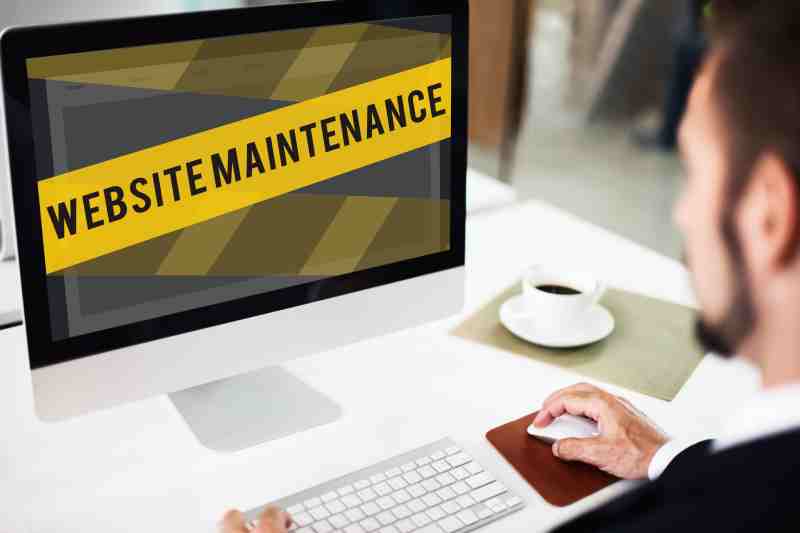Your website acts as your 24/7 salesperson and forms your audience’s vital first impression. To sustain this gateway to your business, routine website maintenance proves essential – not just a chore, but the foundation of digital reliability.
Simply put, this preventative maintenance safeguards three pillars:
- Security protocols to block vulnerabilities
- Website Performance optimization for speed
- User Experience (UX) refinement to eliminate frustrations
Consistent upkeep ensures your entire Website Health ecosystem functions seamlessly. Neglecting it risks technical wildfires that can devour brand reputation through downtime or data breaches.
While solopreneurs often juggle technical demands, proactive maintenance converts potential crises into controlled check-ups rather than emergency surgeries. Our actionable roadmap simplifies this process with 7 essential checks to secure, streamline, and sustain your website’s operational integrity.
Your Actionable Weekly Checklist for Routine Website Maintenance
To simplify your Routine Website Maintenance, here’s an essential Maintenance Checklist designed to keep your website running smoothly:
1.Weekly Check: Confirm Successful Website Backups
Verify that your host or CMS automates Data Backup/Site Backup processes. This prevents minor update mishaps from wiping weeks of progress. Check backup logs weekly – if unavailable, simply confirm backup files download properly to your secure drive.
2. Weekly Scan: Identify and Address Broken Links
Use free tools like Screaming Frog to audit internal/external Broken Links. Dead ends frustrate visitors and tank SEO rankings. Update redirects for moved pages or prune links lacking replacement content.
3. Weekly Test: Verify Essential Form Functionality
Submit test inquiries through contact/lead forms. This ensures Form Functionality by verifying submissions reach the correct inbox with all details intact. Bonus: test across key browsers like Chrome and Safari, especially on mobile.
4. Weekly Check: Quick Website Uptime and Visual Speed Assessment
Does your homepage load within 3 seconds? Use Google PageSpeed Insights for Page Load Speed snapshots. While technical fixes wait, at least confirm accessibility through uptime monitoring.
5. Weekly Review: Manage Spam Comments
Skim comments for Spam phrases (“Make money fast”), deleting anything compromising site safety. Moderate tone – delete hate speech while fostering community dialogue.
6. Weekly Check: Basic Security and SSL Certificate Status
Glance at browser padlocks – if “Not Secure” appears, your expiring SSL Certificate needs renewal. Enable security plugin notifications (like Wordfence) for malware alerts needing urgent response.
After implementing these Weekly Website Maintenance basics, you’re primed to optimize advanced performance monitoring in our security-focused next section.
Key Weekly Checks for Optimal Website Performance and Security
Building on those basic checks you’re already doing, let’s explore some crucial but manageable weekly tasks that help prevent bigger problems down the line. Think of this as your digital hygiene routine – essential maintenance that ensures your site stays healthy and avoids preventable illnesses.
Start by checking the loading speed for crucial pages like new campaign landing areas. If your blog posts take forever to load, you might notice higher bounce rates; tools like Google’s PSI can reveal if you’re crossing that critical three-second threshold where visitors abandon ship.
When reviewing results, don’t ignore those Time to First Byte figures if they’re listed. What if your TTFB spikes? This metric shows how quickly your server responds – delays here could signal underlying technical gremlins needing expert attention.
Verify your SSL cert status weekly: that padlock icon matters more than decoration
Check plugin dashboards for red-alert warnings needing immediate action
Security plugins aren’t just for emergencies. Schedule weekly glances for update flags – especially those urgent security patches. Outdated components create unlocked digital doors where annual malware infections can stroll right in.
Updates do more than slam security gaps. Engineers constantly refine code to squash bugs and adapt to changing tech landscapes; staying current helps your site remain compatible and efficient.
Here’s a surprise consequence of neglected maintenance: each unused extension slows your site. That plugin graveyard in your CMS? Those digital skeletons might be costing you traffic without delivering value.
By dedicating 20 minutes weekly to these health checks, you actively prevent costly scenarios like conversion-plummeting speed bottlenecks or reputation-killing security breaches. Remember – proactive prevention always costs less than crisis recovery.

Maintaining Content Integrity and User Trust Through Weekly Care
Beyond the technical tune-ups of servers and software, your Routine Website Maintenance extends to protecting two visitor-facing essentials: Content Integrity and User Experience (UX). This is where first impressions live or die.
Make it a habit to review any new Website Content immediately after publishing: a blog post going live Monday, or fresh service pages rolling out with your latest campaign. Check:
- Display quality of all Images across devices
- Clickable functionality for embedded Broken Links prevention
- Accurate formatting, preserving article structure
Catching these display errors early prevents the digital equivalent of spinach in teeth, keeping your site professionally presented while avoiding Negative User Experience frustrations.
Also, since your visitors likely browse via smartphone, perform a 30-second Mobile Responsiveness / Mobile Optimization check weekly on critical pages like:
- Homepage after any design tweaks
- Newly launched Landing Page campaigns
View one page on your phone’s browser each Tuesday. Pinch-zoom to confirm text remains readable. Can visitors tap CTAs without accidental clicks on neighboring elements?
Finally, dedicate 90 seconds each Thursday to verifying essential Call-to-Actions (CTAs) – the “View Services” button in your portfolio or the “Download Price Sheet” link in new blog posts. Confirm they lead to intended destinations rather than 404 purgatory.
This triad of checks forms a maintenance moat: preserving your site’s functionality for visitors, supporting ongoing Marketing campaigns, and maintaining the hard-earned professional reputation that converts casual browsers into clients.
Also Read: Igniting Campaign Success Through Strategic Landing Page Optimization
Integrating Weekly Routine Website Maintenance Into Your Workflow
While website upkeep might seem overwhelming, weekly Routine Website Maintenance isn’t about perfection; it’s about prevention. These small yet consistent efforts serve as preventive maintenance that directly contributes to Enhanced Website Security and Better Website Performance.
Like clockwork, your regular Website Maintenance routines quietly strengthen your online presence every seven days. This discipline helps optimize page loading speeds for frustrated visitors while shielding sensitive client data from emerging cyber threats.
Furthermore, these weekly habits build trust through Improved User Experience and reinforce your Protection of Brand Reputation through seamless interactions. Just think – smooth navigation keeps leads engaged, while updated security seals make clients feel safe sharing their information.
By making these tasks second nature, you’re not just crossing items off a list-you’re forging an ownership mentality. This subtle shift lets you focus on creative business growth opportunities rather than scrambling after avoidable technical fires.
So, how do we begin? Start tomorrow by dedicating just 20 minutes to the highest-priority checklist items. Before you realize, that time investment will feel like breathing-you’re building digital resiliency without draining your schedule! These consistent weekly steps protect your livelihood and create mental bandwidth for the impactful work that fuels sustainable growth.








Leave a Reply
You must be logged in to post a comment.